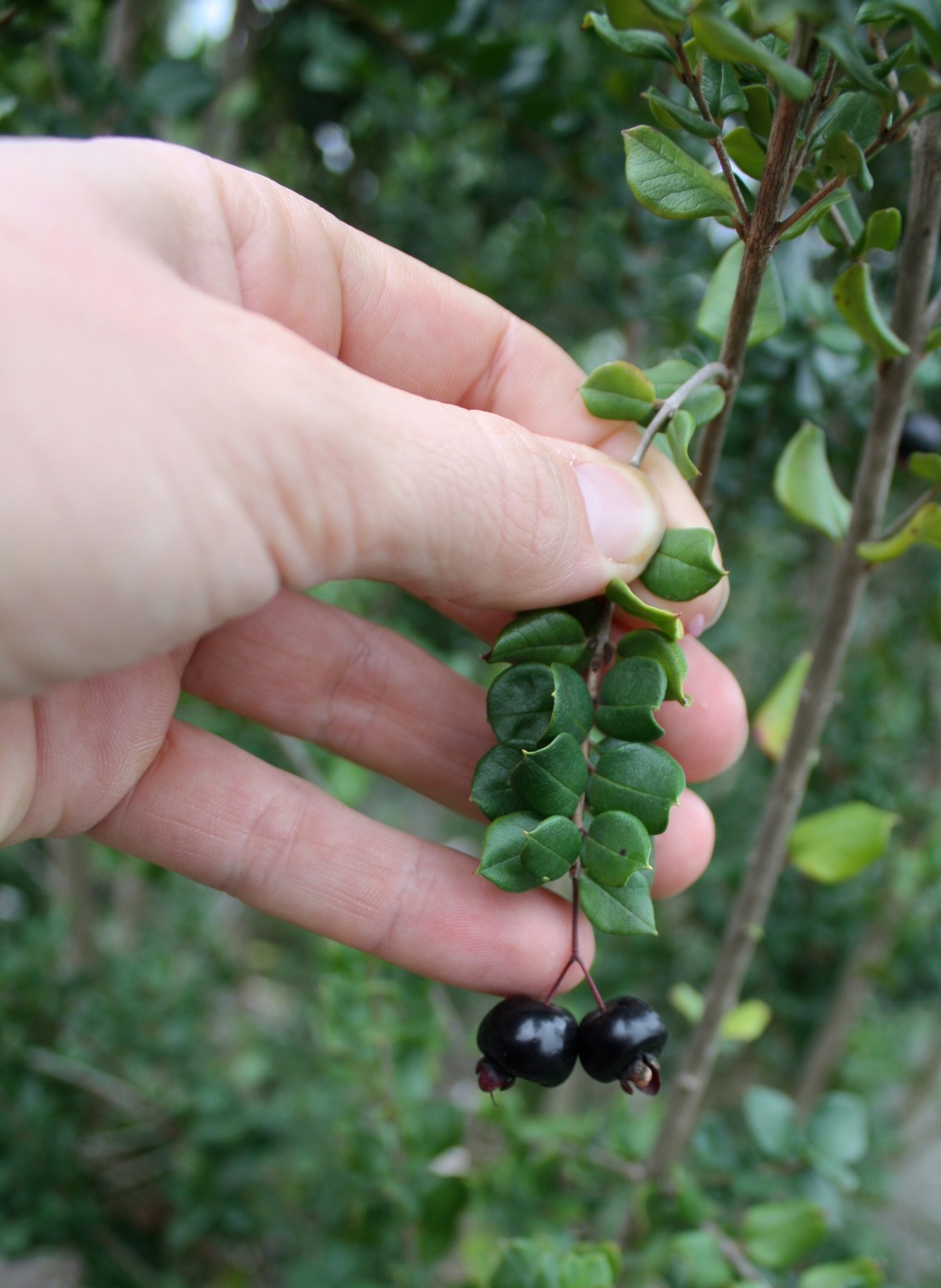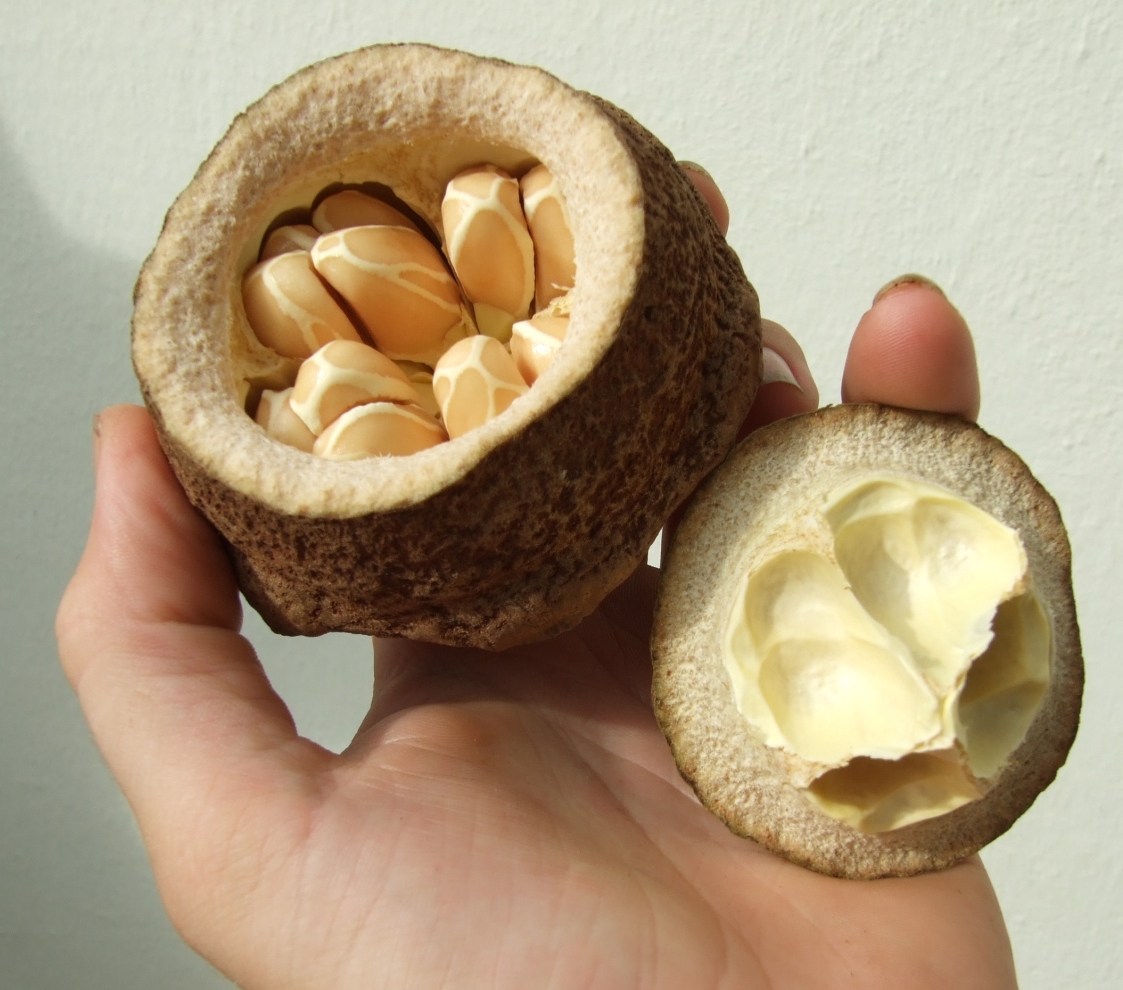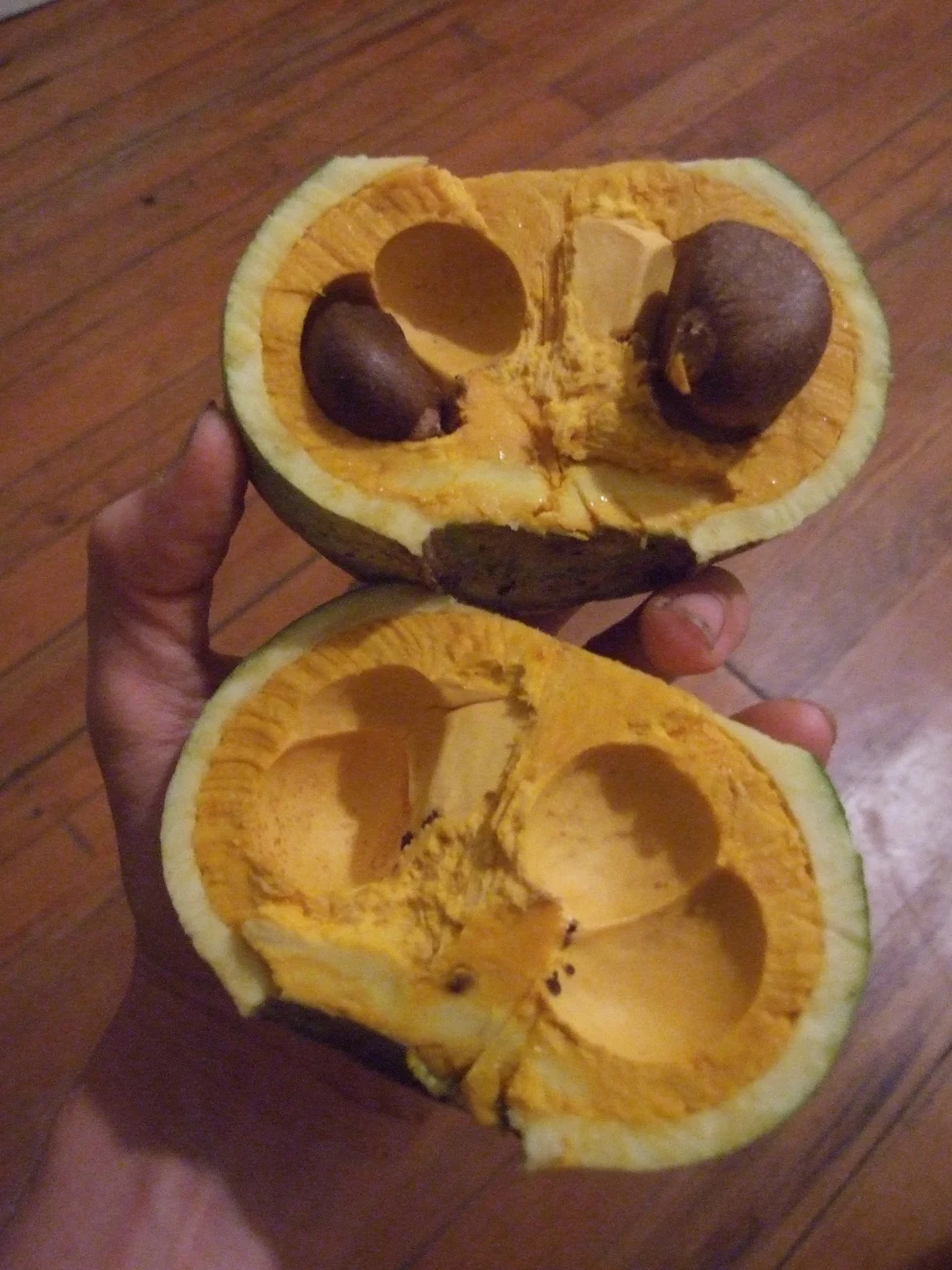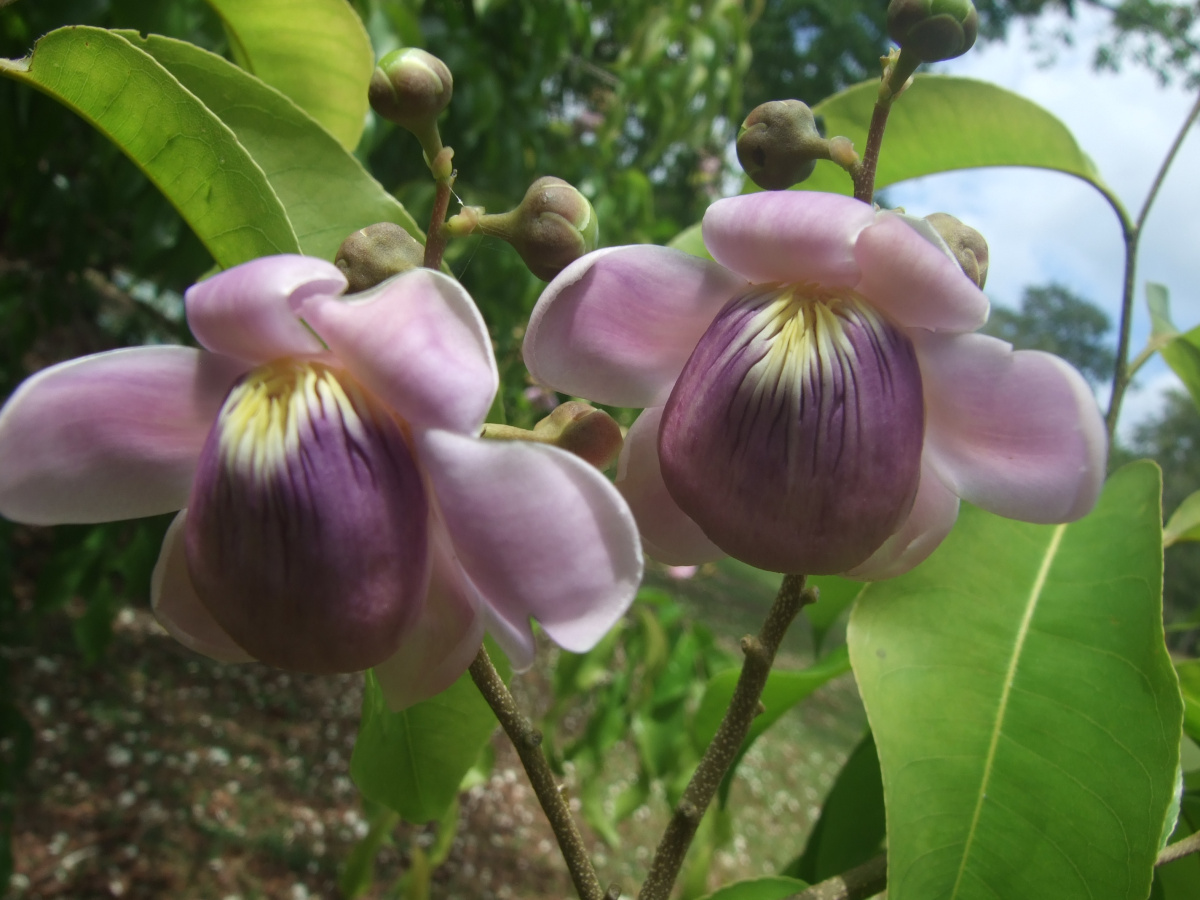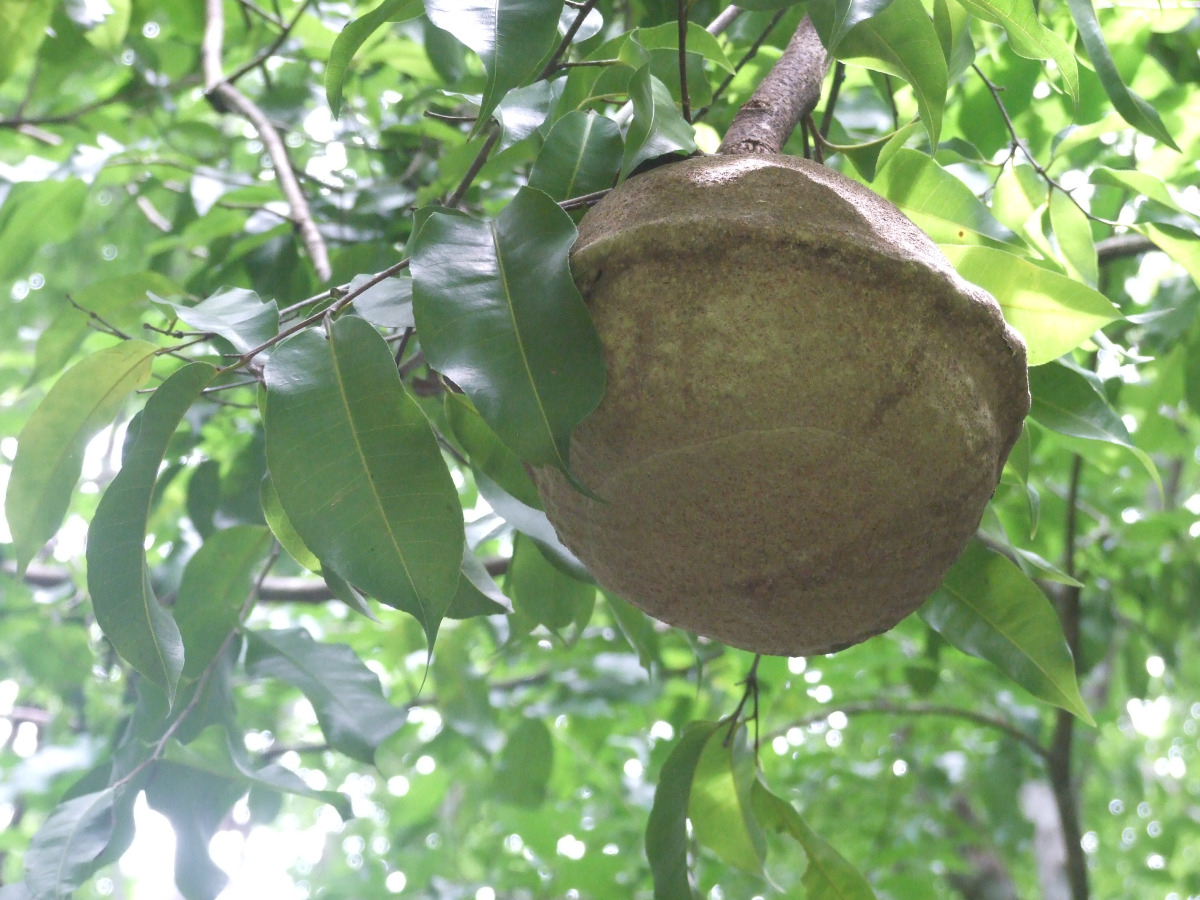BACKGROUND, ORIGIN AND DISTRIBUTION
Suriname Cherry originates in Brazil from Bahia to the south; along with jaboticaba, it is one of the most common fruits in the country.
In humid tropical climates the tree can surpass 7 m in height. In subtropical regions it typically doesn’t get much taller then 2-4 m.
The foliage is very decorative, bright green with various hues of red in new leaf growth.
USES AND ETHNOBOTANY
The fruit has many uses, but is typically eaten raw. There exist red and purple varieties, which can be either sweet or acidic. It is considered to be one of the best Myrtaceae fruits. The tree bears abundantly, its fruits typically used in preserves, ice creams, syrups, wines and liquors.
The leaves of the tree emit a pleasant aroma when crushed, the smell is employed as a deterrent for flies and mosquitoes. To this end, it is Brazilian custom to scatter crushed leaves on the floors of ones home. The flowers attract honeybees, considered to be a desirable species for apiculture.
The fruit contains 6% sugar, 1% protein and is very acidic, and rich in vitamin C, 25 – 43 mg per 100 g.
PROPAGATION AND CULTIVATION
Suriname Cherry can be propagated easily from fresh seed. Seed does not have very long viability. The small trees are adapted to the humid tropics and subtropics, from sea level up to 1,700 meters altitude, but they thrive in lower elevation, hot, humid tropical climates. In dryer regions the tree benefits from irrigation, which enables it to produce more abundantly. The tree can adapt to all kinds of soils, from sandy to clay.


